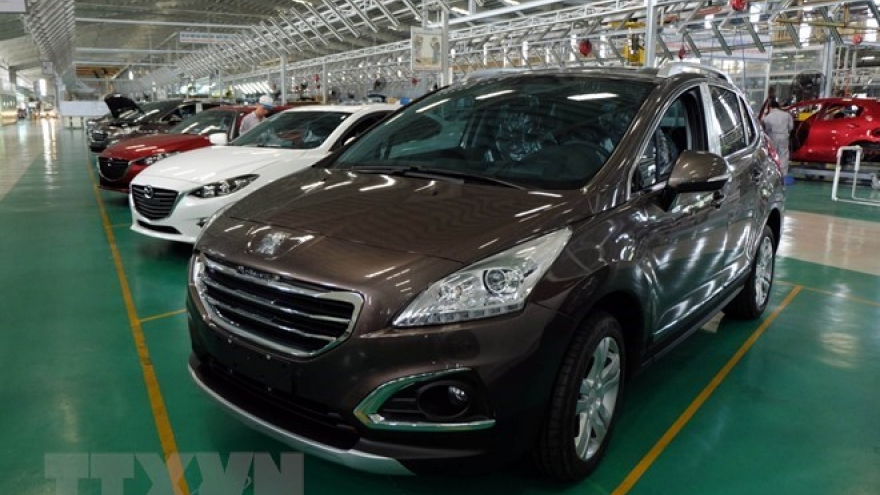Automobile joint ventures expanding production in Vietnam
While some automobile assemblers have stopped domestic production and shifted to importing products, others have poured more money into production lines in Vietnam.
 |
Mitsubishi Motors, for the first time in the last 23 years in Vietnam, has assembled the Outlander model in Vietnam. The first products hit the market earlier this year with a selling price VND200 million, lower than CBU imports in 2017.
A senior executive of Mitsubishi Motors Vietnam said the move showed the manufacturer’s commitments to long-term business in Vietnam.
In April, Ford Vietnam began delivering the newly assembled EcoSport to customers. Ford Vietnam’s CEO Pham Van Dung said to make the new model, Ford Vietnam had spent several million dollars for its production line in Hai Duong province.
In late March, Thaco opened a factory that makes Mazda products with the capacity of 50,000 products per annum for the first phase of operation. The VND12 trillion factory in Chu Lai Open Economic Zone with the total capacity of 100,000 products per annum received technology from Mazda Group.
Hyundai Thanh Cong no longer imports cars for domestic sale, but now assembles cars. The manufacturer’s representative said 90-95 percent of Hyundai car models in Vietnam this year will be domestically assembled products.
Auto manufacturers expanding their production in Vietnam are called “against-the-stream swimmers’. Many other manufacturers have shifted to importing cars rather than making cars in Vietnam, because domestically made products are uncompetitive with imports from ASEAN, which have become cheaper thanks to the tariff cut.
Vietnam is a small market, one-sixth of Indonesia’s and one-fifth of Thailand’s. As there are many car models available in the market, the output of each model is very small. Therefore, production costs in Vietnam are 20% higher.
Weak supporting industries in Vietnam are also blamed for high production costs.
However, some analysts note that auto manufacturers are only expanding production of car models they don’t make at their factories in Thailand and Indonesia, i.e, models which cannot enjoy zero tariff.
Ford Vietnam, for example, besides Ecosport, still assembles Focus, Fiesta and Transit. The four models are not assembled in Ford’s factories in Thailand and Indonesia.
As for Mazda, the Japanese manufacturer has a factory in Thailand, but the output is low and it mostly makes pick-ups. So, setting up a factory in Vietnam was a reasonable decision.
Similarly, Hyundai products have been mostly imported from South Korea and India, not from ASEAN members.

